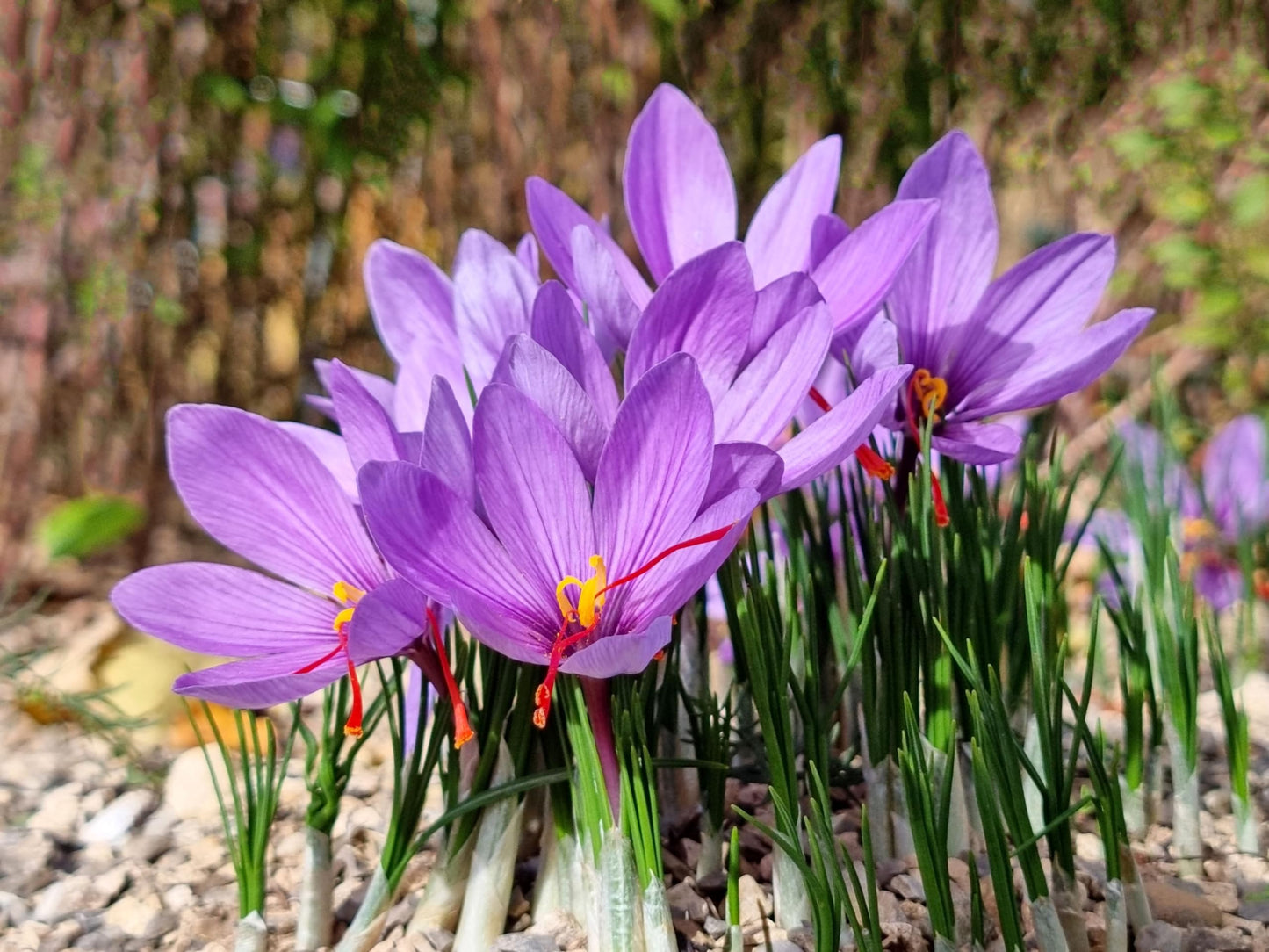Saffron Crocus sativus Herb Seeds for Planting in Kitchen Garden
Couldn't load pickup availability
Description
Saffron Flower Seeds (Various Varieties)
Characteristics and Uses of Saffron Flower Plants
Saffron flowers, known for their vibrant purple blooms and distinctive red stigmas, are not only beautiful but also highly valued for their culinary and medicinal uses. These flower seeds produce various varieties of Crocus sativus, the source of the world-renowned spice saffron. Each flower yields a small amount of saffron, making it a rewarding plant for gardeners interested in both aesthetics and gastronomy. With their unique beauty and economic value, Saffron flowers are an excellent addition to any garden, providing both visual appeal and a potential source of income.
Growing Conditions for Saffron Flower Plants
- Light Requirements: Full sun, requiring at least 6-8 hours of direct sunlight daily.
- Soil Type: Well-draining, sandy soil with a pH of 6.0 to 7.0.
- Temperature: Thrives in moderate temperatures, ideally between 60°F to 70°F.
- Humidity: Prefers low humidity levels, making it suitable for dry environments.
Planting Tips for Saffron Flower
- Seed Preparation: Plant corms in the fall for spring blooms, ensuring they are healthy and firm.
- Planting Depth: Plant corms about 4-6 inches deep in well-draining soil.
- Spacing: Space corms 6-8 inches apart to allow for proper growth and airflow.
Watering Instructions and Tips
- Watering Frequency: Water sparingly; allow the soil to dry out completely between waterings.
- Water Quality: Use room temperature, non-chlorinated water for best results.
- Signs of Overwatering: Yellowing leaves and mushy corms can indicate excessive moisture.
Growing Zones
Saffron flowers are suitable for USDA zones 6-9 and can thrive in global zones that offer warm, dry climates. Their adaptability makes them a great choice for various gardening environments, including raised beds and containers.
Key Benefits & Uses
- Health Benefits: Saffron is known for its antioxidant properties and potential health benefits, including mood enhancement.
- Culinary Uses: The stigmas are used as a spice in various dishes, adding flavor and color.
- Aesthetic Appeal: Their striking flowers add beauty and charm to any garden or patio.
Best Uses in the Garden & Landscape
- Container Gardening: Ideal for patios and balconies, adding a touch of elegance without taking up much space.
- Ornamental Planting: Perfect for borders and as focal points in flower beds.
- Mixed Plantings: Combines beautifully with other flowering plants for a diverse garden display.
Conclusion
In conclusion, Saffron flower seeds from bijaseeds offer an exciting opportunity for gardeners to cultivate beautiful and economically valuable plants that enhance any garden. With their unique blooms and culinary potential, these seeds are a fantastic choice for both novice and experienced gardeners. bijaseeds is a big, trusted name in the seed world, offering a wide range of high-quality, non-GMO varieties to gardeners everywhere.
FAQ
How do I grow Saffron flower seeds?
To grow Saffron flower seeds, plant corms in the fall in well-draining soil about 4-6 inches deep. Ensure they receive plenty of sunlight and minimal water for optimal growth.
When is the best time to plant Saffron flower seeds?
The best time to plant Saffron flower seeds is in the fall, allowing the corms to establish roots before winter and bloom in the spring.
Are Saffron flowers difficult to grow?
Saffron flowers are generally easy to grow, making them suitable for gardeners of all levels. With proper care, including adequate sunlight and minimal watering, they can thrive and produce beautiful blooms.



